This was published 5 years ago
Rhine River cruise, Germany: Medieval castles and foodie treats along Europe's majestic waterway
By Caroline Gladstone
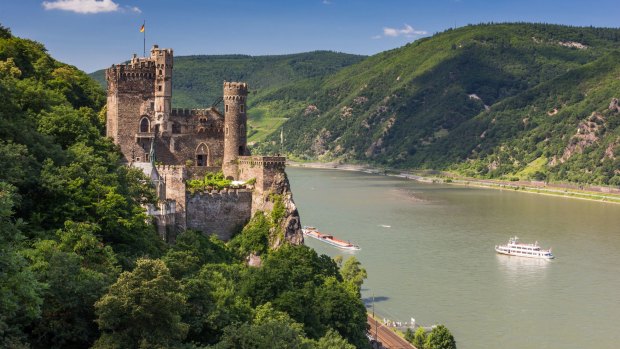
Katz Castle on the Rhine River.Credit: Shutterstock
Apparently German efficiency is a myth – I read it on the internet somewhere. However, from my experience in the country, I find the trains, trams and buses turn up right on time and beers are speedily delivered to tables throughout the country's bustling beer halls.
And looking out from the sun deck of my river boat as we slip along the Rhine River, it seems efficiency and German engineering happily meet and stare me in the face. High on the hilltops on both sides of the river are no fewer than 23 medieval castles positioned along the 65-kilometre stretch of the river known as the Rhine Gorge, a UNESCO World Heritage site. The Rhine runs for 1230 kilometres from the Oberlap Pass in the Swiss Alps to the North Sea at a place called Hoek van Holland in the south-western corner of Holland.
Some of the castles along it fly flags and are owned by Japanese businessmen and retired opera singers, others are in disrepair. At the water line are a series of kilometre markers, telling passengers how far we are from the river's source in Switzerland. The markers, known as "Rhine-kilometres", begin at zero in Lake Constance, Switzerland, and were placed along the river in 1939; what a stroke of genius that was.
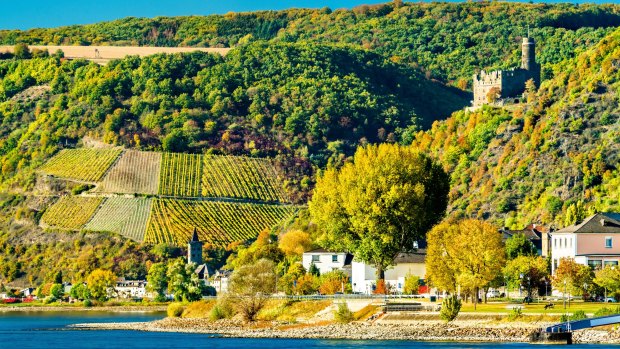
Maus Castle above the village of Wellmich in the Middle Rhine Valley, Germany.Credit: Shutterstock
With map in hand, camera at the ready and a commentary from the cruise director, it's fun, although not that easy to work out which of these magnificent castles is which. I look at the castle above and look down to the marker and then the fact sheet. Buying the picture book Castles and Palaces of the Rhine turns out to have been a good move.
Although our cruiser, Travelmarvel Sapphire, is moseying along at a gentle pace, the castles appear every 500 metres or so on both sides of the river, so I am flicking my head from left to right and snapping away at structures such as the Maus (mouse) castle at the village of Wellmich (marker 559 kilometres), which just happens to be a little upstream from Katz (cat) castle at the beautiful village of St Goarshausen at 556 kilometres.
The ship slows to a crawl as we approach marker 555, the site of the legendary Lorelei rock, and the place where that infamous siren was said to have lured sailors to their death.
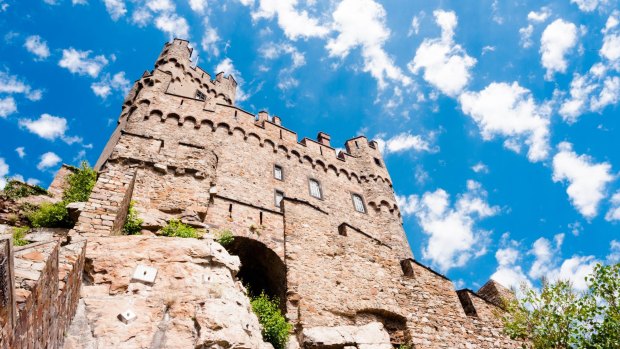
Burg Sooneck, one of Rhein castles from Mainz to Cologne.Credit: Shutterstock
At the base of the lofty hill is a diminutive statue of the mythical lady, naked with flowing hair; you need to have a good lens or binoculars to make out any detail. A succession of castles follows with three magnificent piles all in the village of Trechtingshausen – my favourite being Sooneck castle (marker 538 kilometres), which has the distinctive feature of a round tower.
Together with the castles, the river has other joys and distractions. On most mornings when I pull back my cabin curtains and slide open the glass doors, I'm surprised to see mist on the water despite it being early autumn and not that cold; when I look up to the sky, I see contrails (vapourised trails left behind by jet aircraft), criss-crossing the bright morning sky.
Then there's the river traffic. Never have I seen so many barges chugging along the Rhine and later the Main River, a major tributary that we turn into not far from the town of Mainz. Dozens of them pass by our riverboat every day, carrying a fascinating array of goods from sizeable shipping containers, to gravel and quite a few are laden down with steel pipes jointed together, which I surmise are floating electricity power stations.
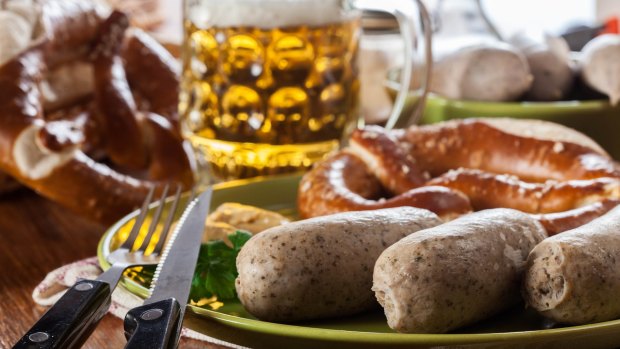
Bavarian breakfast with white sausage, pretzel and beer.Credit: Shutterstock
And, of course, there are the locks. On my seven-day cruise (half of the 15-day European Gems cruise) from Amsterdam to Nuremberg, we pass through about 46 locks, those narrow "water chambers" that work like elevators to raise and lower the ship as it moves through different depths of the river. We encounter the first lock an hour or so out of Utrecht, when all passengers are on the sun deck in readiness for the safety briefing. As the ship is raised to the exact level of the river bank, we come face to face with a young couple, their children and dog out for an afternoon stroll. We passengers, who are mostly from Australia with a fair sprinkling of Brits and some New Zealanders, exchange pleasantries with the Dutch family who are captivated by how our ship rises to meet them.
All the locks are 12 metres wide and as the Sapphire is 11.45 metres across its beam, it's a tight squeeze. Every now and then there's a shudder as the ship moves vertically through the lock and touches the lock's stone walls. That's called the "lock rock" and if it happens in the dead of night, I never notice it.
Then there are the "lock hoppers". They are the entertainers and guest speakers who board our ship in the evening to put on a show or present a display, such as the glass-blowing that takes place just after we leave the village of Freudenberg.
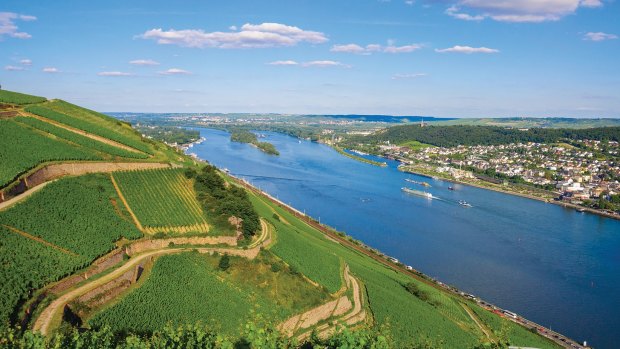
Vineyards along the Rhine River, Germany.
These performers board at a town or a lock stop and although their performance may only be an hour or so long, they must wait for the next lock to get off. They usually wile away this time at the bar, or in the case of the aunt and niece ABBA performers, by changing out of their costumes and relaxing in their civvies. One assumes there's a partner or friend at the next lock waiting in a car to collect them.
That's an awful lot to riverboat life before you even consider the cities, town and villages visited. There are dozens of bridges along the rivers – some are so low that the captain's wheelhouse at the front of the vessel is lowered, also like an elevator, to prevent it from scraping or banging into the bridge. Passengers are not allowed on the deck during certain stretches of the river trip to avoid any human-bridge collisions.
Each town or city visited has its own personality, stories, unique foodie treats and special beers. Once on the Main River we discover this is not just a sizeable tributary but is also known as the White Sausage Equator. Weisswurst (white sausages) are eaten south of the river and the dark bratwurst, along with another called bockwurst, are consumed in the north. We taste five different types of snags (my slang is in deference to the 62 per cent of the guests who are Aussies) at a brunch called Fruhschoppen, as we sail along the Main towards Bamberg. It translates as "an alcoholic drink before midday" and that explains the beer we consume to wash down the meat that includes weisswurst, to "pigs in blankets" (frankfurts in pastry) and kasekrainer, which is filled with cheese. Once in Bamberg, most of us take the city tour while others seek the specialty "smoked beer", or rauchbier, said to taste like liquid bacon.
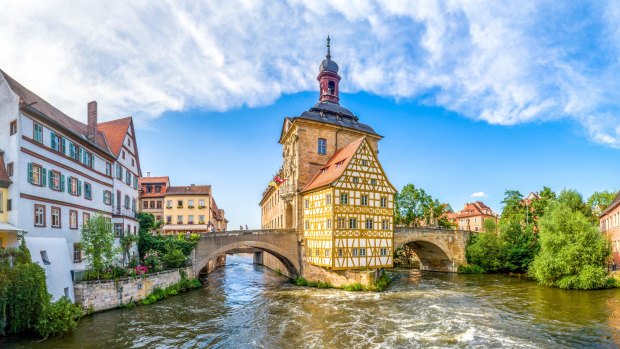
Old Town hall, Bamberg.Credit: Shutterstock
Every time we arrive at a new town and meet our guide, we're told another intriguing tale – the posh Franconians like wine, the Bavarians love beer and the former thinks that the latter are weird. And like all borders, the sausage equator is in dispute with some saying the imaginary line is in fact further south of the Main River.
Frankly, my fellow passengers don't give a lederhosen hoot. They have absolutely nailed the art of relaxation and maximising fun. The ship is alive with chatter and laughter and any thoughts I had that they'd be party poopers are dashed. Every night after dinner, almost everyone hits the dance floor as soon as Gabor the pianist plays his first chord, while by night three (of 14 nights) there's a conga line snaking around the show lounge.
A new friend asks me if I think the crowd has peaked. I say "no". There's more beer and boogie to come before the final "auf wiedersehen" is exchanged.
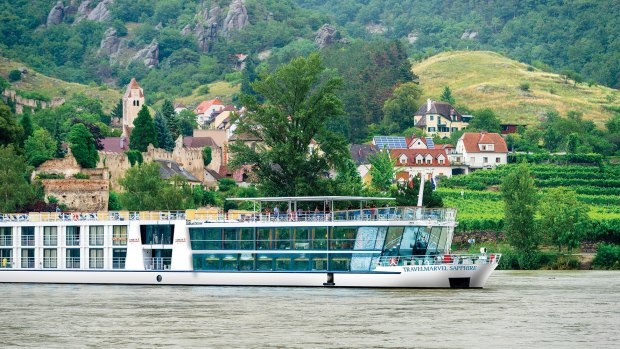
SunFeb17Germany - Travelmarvel Sapphire Rhine River cruise - Caroline Gladstone Image supplied by Travelmarvel via journalist travelmarvel-sapphireCredit: Brett Edmonds
TRIP NOTES
Caroline Gladstone travelled for half of the 15-day European Gems cruise, courtesy of Travelmarvel.
MORE
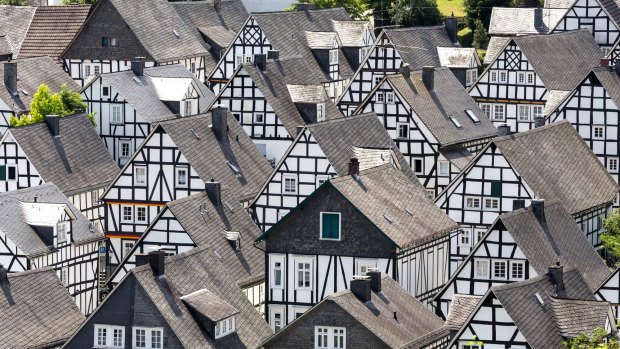
german timbered houses in freudenberg germany - Image SunFeb17Germany - Travelmarvel Sapphire Rhine River cruise - Caroline Gladstone Credit: ShutterstockCredit: SHUTTERSTOCK
FLY
Emirates flies to Amsterdam and Budapest to join the European Gems cruise. See emirates.com
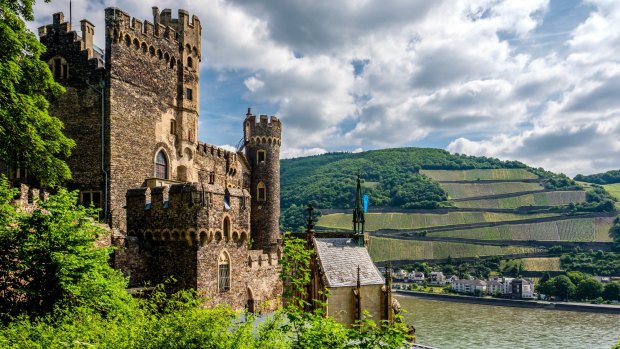
The Rheinstein Castle is one of many forts to be spotted as you travel through the Rhine Valley in Germany. Credit: Shutterstock
CRUISE
Travelmarvel operates cruises on European rivers from April to October. The 15-day European Gems itinerary from Amsterdam to Budapest (or reverse) travels on three rivers, through five countries. Fares include meals, excursions, wine/beer with lunch and dinner and Wi-Fi and starts from $5495 a person twin share (when booking before 30 April 2019). See travelmarvel.com.au
Sign up for the Traveller Deals newsletter
Get exclusive travel deals delivered straight to your inbox. Sign up now.